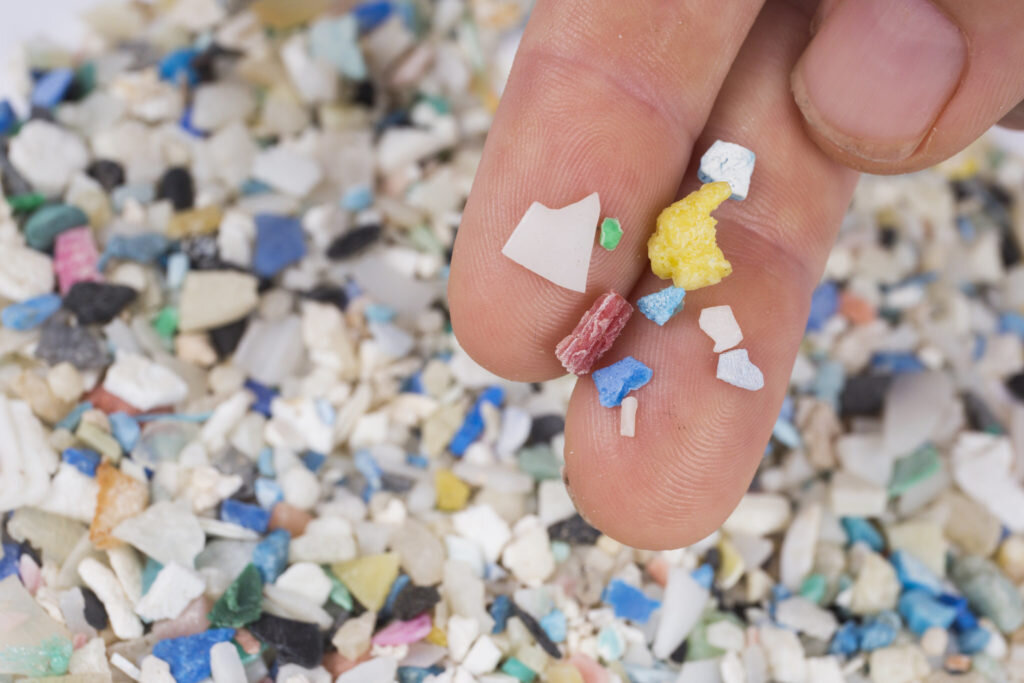New Year, New Me, No More Plastic

Look around you.... There are probably numerous plastic objects surrounding you right now. Since its invention in the late 19th century, plastics have only become more and more prolific in our lives. Furniture, technology, packaging, containers, many of our gadgets and gizmos -- so many of them are made of this infamous synthetic material.
Plastic: what is it exactly?
Plastics are a Synthetic Material: fibers made from synthesized polymers of small molecules. Basically, this means plastics are a man-made material that is created in labs.
Specifically, plastic is created using carbon found in oil. Scientists can combine many different monomers from oil and other naturally occurring materials to create plastic polymers. This is why we see so many different types of plastic.
Why is everyone telling me to reduce my plastic use?

The first important reason derives from its source - oil. Oil is a finite fossil fuel created over millennia through geochemical processes slowly turning fossilized organic material into a carbon rich, viscous fluid. The word finite is key here. In fact, many speculate the planet will come close to the end of its oil stocks during our lifetimes at the rate humans currently consume oil.
The other issue with oil is how we attain it. Extracting oil requires large scale drilling, the injection of water into the ground to increase pressure and flow output, a technique that has recorded risk of increased seismic activity, and the possibility of oil spills both in extraction and transport.
However, plastic is hardly the largest consumer of oil in our society. The more potent problem with widespread plastic use is the end of its lifecycle, or lack thereof. Plastic never decomposes the way natural and organic materials do.
Take paper towels or glass, for example. Under the right conditions, a paper towel will break back down to compost in less than a month and glass will break back down to sand in about one million years. Despite the disparity in time here, we at least have assurance that these materials will eventually return to their natural form.
Plastic, on the other hand, doesn't seem to ever break down in this manner, no matter how many years it's given. It just becomes smaller and smaller pieces of plastic, called microplastics.

When introduced to our riparian and marine environments, both macro and microplastics can cause serious problems. This includes physical threats, such as entanglements within the ecosystem or gastrointestinal blockage if consumed by animals; and chemical threats, such as bioaccumulation of plastic within food webs. This is similar to how accumulation of mercury happens in marine ecosystems.
There are even some studies showing a high likelihood of plastic bioaccumulation affecting humans in the near future - scary!!
But I recycle so it’s okay if I use plastics sometimes...right?
Well, sort of.
You’ve heard the phrase “reduce, reuse, recycle,” but did you know that the order is essential to its successful implementation? It’s vital we try to reduce, reuse, or even refuse plastic before we turn to recycling it.
Preaching the recycling of plastic as a solution that just perpetuates the idea that plastic use is sustainable for our planet when many types of plastic cannot even be recycled in the first place (check out Waste Management's website here to learn what can be recycled in Washoe County). Any plastic that cannot be recycled will either a) be incinerated, contributing to air pollution, b) remain in the environment, polluting our lands and waters, or c) end up in a landfill.
Plastic in the Truckee River Watershed
Not only has the UC Davis Lake Tahoe Research Center confirmed the presence of microplastics in Lake Tahoe, their researchers say its presence is "'completely avoidable'" as it is the result of mismanaged waste and littering all around our watershed.
The best solution? Attack the problem at its source and start the process of cutting plastic out of your life.
Easy Ways to Your Reduce Plastic Use Today

Step 1: Work towards getting long-lasting alternatives to plastic items. These are your reusable tote bags, your stainless steel water bottles, and your glass Tupperware, reusable coffee mugs and cutlery. They will outlive their plastic counterparts and are a great offense against the dreaded single use plastic.
Step 2: When you’re shopping, look for products packaged in glass or cardboard. If you have to buy the plastic option, try to reuse it afterwards instead of buying more (check out our blog on eco-friendly cleaning for some ideas).
Step 3: Try buying in bulk when you're grocery shopping, and bring your own containers to fill up! You'll be saving plastic AND saving money.
Step 4: Ditch the plastic baggies and saran wrap. Not only can these plastics not be recycled, they are easy to purge from your life. Look into some beeswax wrap, a biodegradable alternative.
These are just some of the easiest changes you can make, but for more plastic free inspiration check out My Plastic Free Life's plastic-free guide.
Sources
Facts & Figures About Materials, Waste and Recycling
